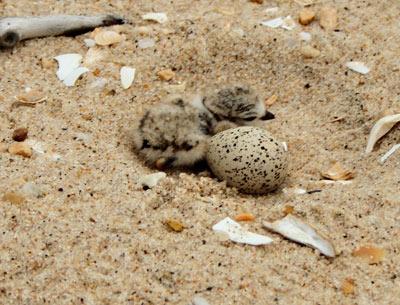Nature Notes: Long Day’s Journey

We are on the verge of the longest day of the year, the summer solstice. For those living on the equator, it’s just another day. For those on the tiny island of Spitzbergen in the Arctic Ocean off the northernmost coast of Norway, there will only be day, no night.
Before life on earth began percolating some three to four billion years ago, the earth had been revolving around the sun in an orbit very much like its present one, and it took on the order of 365 days to make the journey. Its orbit accounts for those living in the southern hemisphere having their winter and shortest days in May through August, just the opposite of what we in the northern hemisphere experience each year.
The daily spin on its axis and yearly trip around the sun has been incorporated into the genomes of just about every plant and animal, as well as the most primitive free-living beings, the blue-green algae and the like. We all have circadian rhythms. Even single-celled organisms or cells isolated from multicellular organisms raised in isolation from their mates exhibit circadian rhythms.
Almost all wild flora and fauna live today as they did thousands of years ago according to their respective circadian rhythms. Even animals such as the axolotl salamander and the cave mole, which live in complete darkness, have daily rhythms that are the same from generation to generation. Humans and their pets are different. In the old days there were no night jobs. One slept in the dark and worked during the day. These days there are three different shifts, day, swing, and night. The city and, one might also say, the country, never sleeps. We have all-night convenience stores, 24-hour radio and TV media, different means of nighttime transportation, and the like.
Even so, humans are not so different from those animals that live by day and rest by night or vice versa. We tend to live beyond our innate circadian rhythms, which are established early in the womb. We play havoc with our rhythms and end up paying the price. We take more and more drugs, more and more medicines. Living the old way is considered boring, especially here in the Hamptons, when the long days, long nights, and freely circulating alcohol and money begs us to live it up.
It is no fluke of evolution or God’s work, whichever way you care to look at it, that all of nature in the northern hemisphere is most active in the spring, building up to a crescendo which asymptotes around the time of the summer solstice. By now most of the bird species that stayed the winter or arrived earlier from the south have hatched and fledged young. Their inherent circadian rhythms have them changing from singing, defending territories, and sitting on eggs to looking after those departed from the nests, teaching them and weaning them, as it were.
The same is true near the Arctic Circle, where maximum productivity in terms of food, reproduction, and energy expenditure has reached a turning point. The rest of the summer leads to fattening and preparing for the trip back south.
Frogs and salamanders have mostly finished breeding except for those that are completely monsoon-dependent such as the spadefoot toads and Fowler’s toads. All of the insectivorous species — the fishes, amphibians, birds, bats, dragonflies, and a few others — have been busy gleaning insects from the swarms that build to a maximum at about this time. The fructivorous species are waiting in the wings for the blueberries, blackberries, and the like, while the nut eaters will have to content themselves with foliage, insects, plants, and berries until the acorns, walnuts, hickory nuts, holly berries, and juniper berries come along in the fall.
All nature has circadian rhythms. In vertebrates, these rhythms are chiefly regulated by a gland derived from optic tissue, no bigger than a pea situated in the very middle of the brain. In a few primitive vertebrates like the tuatara lizard and the lamprey, this gland, the pineal gland, still receives light and thus has given rise to the notion of a third eye. This gland has several different cells that contribute to the production of melatonin, a hormone that is produced in the dark, but inhibited by light.
Popularly, today, many adults take synthetic melatonin to help them sleep at night. All vertebrates produce melatonin to keep them rested between exertions such as the 16-hour periods of activity that birds at this latitude experience in May, June, and July. It’s sad, but true, that here on Long Island nature’s crescendo has just about reached its zenith. From now on until the arrival of the winter solstice, everything will be running downhill.
Melatonin production will increase as the nights gradually lengthen. Most of us humans will always try to make the summer seem longer than it is. We’ll continue to live it up right on into the fall, but then school comes and the wellbeing of the kids should always come first. I hesitate to think what would happen to mankind, already in serious trouble, if that little twerp of a gland, the smallest but perhaps the most important of all, were to suddenly dry up and lose its oomph. “Too sleep, perchance to dream.”
Larry Penny can be reached via email at [email protected].
